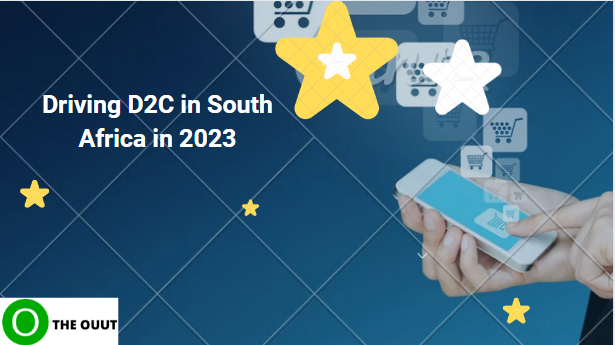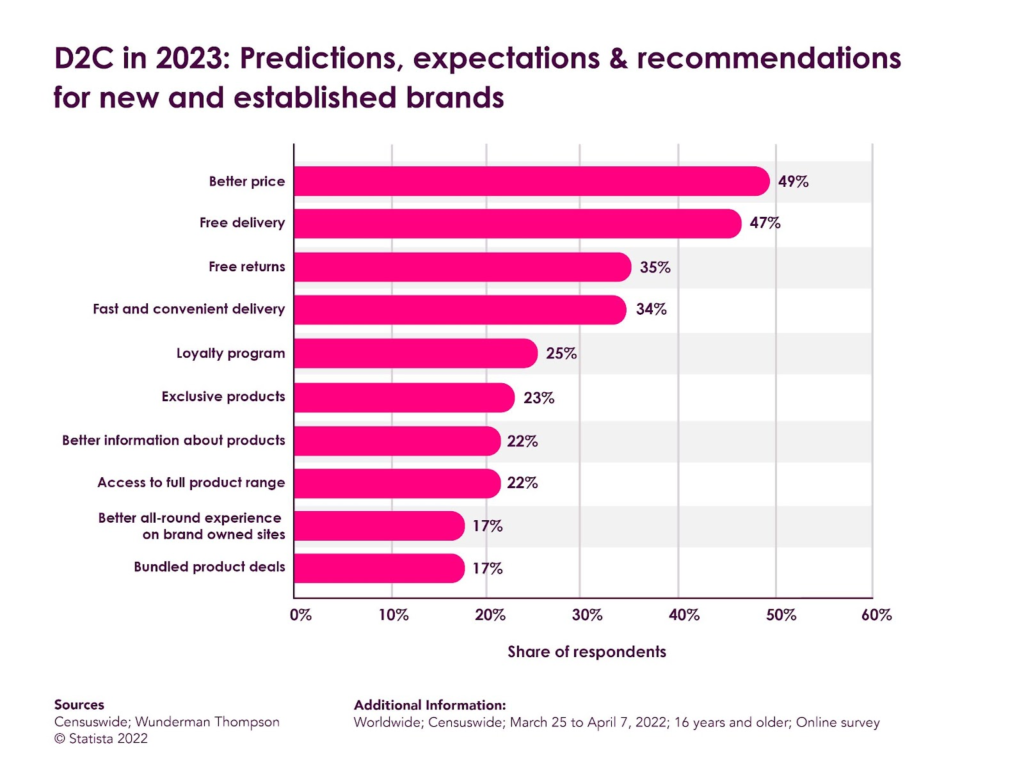Driving D2C in South Africa in 2023

Unlike B2C
It is thought that brands’ necessity to survive gave rise to the new face of D2C e-commerce. But, the business model that permits companies to sell to customers directly has sped up growth in startups and e-commerce. It is the most popular among startups and is no longer a means of survival.
The direct-to-consumer (D2C) model is the current interesting B2C strategy. where businesses grow their consumer bases by selling straight to them. Using a direct-to-consumer (D2C) business model enables customers to click and purchase goods from their websites while also strengthening client interactions one-on-one. D2C businesses may use this to give clients a more educational and entertaining online purchasing experience.
D2C brands, as contrasted with B2C (business-to-customer) businesses, are solely concerned with selling their goods to customers online and through social media. D2Cs avoid using third parties as a result of the sales process. No stores. zero wholesalers no intermediaries
Businesses have traditionally used the B2C strategy by concentrating on retail sales. Here, physical goods were indirectly sold to customers by producers and retailers. People used actual retail stores while also shopping directly on the internet; retailers bought goods from producers and other retailers before offering them to customers. such as Walmart and Amazon.
Companies have direct access to customers thanks to the D2C model. As they are involved from the very beginning of the sales cycle until its very conclusion, this gives them more control over the customer experience. As more Africans access the internet, they interact in bits and bytes on social media. They are establishing favorable conditions for eCommerce initiatives to prosper. In Africa, the D2C model is only getting started, and South African brands are driving the development.
D2C in South Africa
According to Statista, the leading reason consumers choose to shop directly from a brand, at 49%, is better pricing. In second place is free delivery at 47% and free returns at 35% in third place. Free delivery and returns were made industry-standard by Amazon before the covid-19 pandemic arrived, and have become the expectation of most consumers who specifically choose online shopping over a retailer for the reasons of convenience and speed.

The quality of South Africa’s direct-to-consumer market is supported by rising digitalization, which has raised sales of brand-based products that frequently engage in significant advertising to catch consumers’ attention and capture a sizable share of sales. The introduction of D2C has increased the appeal of small-scale and start-up business units as a means of gaining a growth path.
Startups in the accessory, clothing, food and beverage, home and travel direct-to-consumer, and accessory direct-to-consumer sectors have significantly changed the way people purchase in South Africa. Customers of today want to engage with businesses in a number of ways, and brands are more conscious of the fact that if they are not exactly where customers expect to find them, they will lose out on forging deep connections with those customers.
Modern online retailers should be highly concerned about the D2C numbers. The D2C technique has undoubtedly grown more popular as a result of penetration and the globalization of the digital era, and firms in this region are preserving a competitive advantage.
Driving D2C in 2023
Following years of observing the explosive growth of e-commerce on the internet and on mobile devices, corporations are starting to realize the advantages of creating new direct sales channels with their customers. Brand expectations from customers have changed over time. Consumers have higher expectations of brands now, and businesses will explore other channels that can boost D2C growth in 2023.
Social Commerce
You have engaged in social commerce if you have ever stumbled across a product while browsing your Instagram feed or Twitter timeline and bought it without ever leaving that social media app. This differs from clicking on a Facebook or Instagram ad to be directed to a different landing page or website where you may make a purchase. You can make purchases via social commerce without ever needing to log off of Facebook or Instagram.
Making sales isn’t the only goal of social commerce. It’s about forging a personal bond between companies and their clients. People are beginning to recognize how important they are as clients. Consumers anticipate direct communication from brands.
To communicate with customers directly, firms are using these strong social media platforms and merging them with e-commerce. The D2C paradigm is significantly influenced by social media. As social media usage continues to grow, it will give D2C businesses the opportunity to interact directly with customers whenever and wherever they shop.
Shifting Consumer Demands
The consumer will no longer expect the same things from brands as they did in the past. Consumers now have far higher expectations from brands, and in highly competitive circumstances, they will be the ones who deliver. According to data, 61% of consumers would be prepared to give firms more information if it meant they could shop more successfully.
Within 24 hours after their initial interaction with the brand, 54% of customers anticipate receiving a customized discount.
For 51% of consumers, a personalized experience across the brand’s numerous digital platforms is essential.
A payment gateway with improved security and a better user interface would make D2C more convenient in the eyes of 26% of consumers.
Having the option of same-day delivery influences purchases for at least 22% of consumers.
More than 80% of end users are anticipated to make at least one purchase through a D2C brand during the next five years, according to the Direct-to-Consumer Purchase Intent Index.
